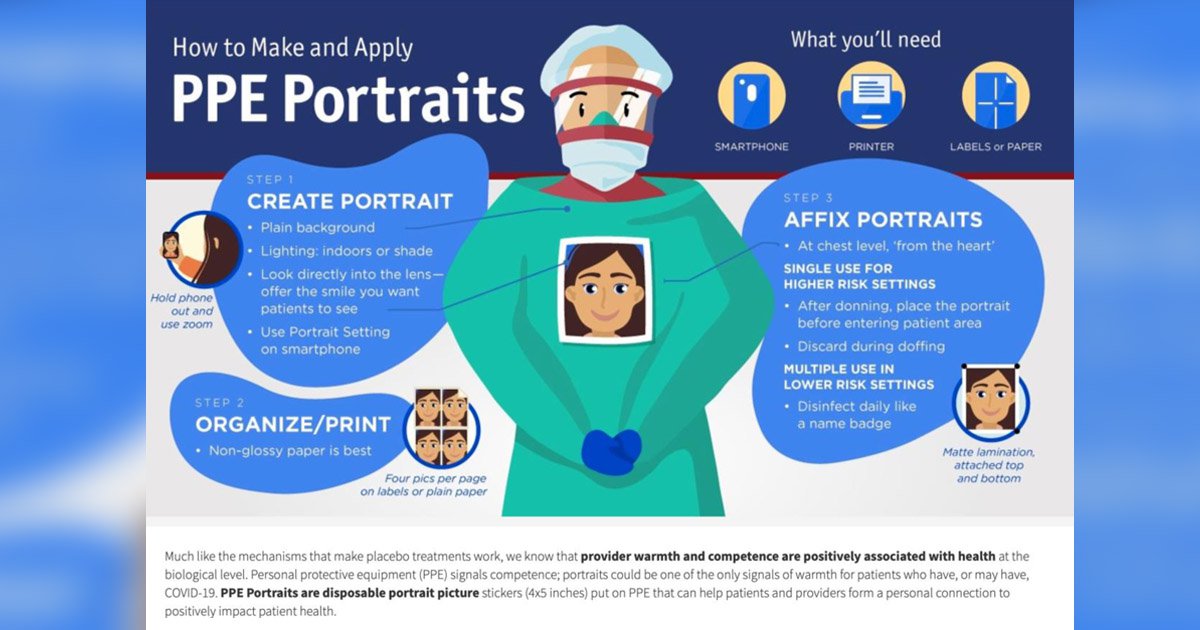PPE portraits help health care workers cope amid COVID-19 pandemic
Click Here to Manage Email Alerts
Personal protective equipment can cause feelings of isolation and fear. However, PPE portraits — postcard-sized self-portraits of doctors affixed to their protective clothing — can help physicians connect with patients, researchers wrote.
Shawna Steadman, MS, RN, ACNP, a nurse practitioner and associate professor at the UMass Memorial Medical School's Graduate School of Nursing, told Healio Primary Care that the portraits were initially used “to combat patients’ isolation and fear when seeing clinicians in PPE that resembled alien suits” during the 2014-2016 Ebola epidemic in West Africa.

During a COVID-19 patient surge between April and May of this year, the UMass Memorial Medical Center (UMMMC) and the Stanford University School of Medicine simultaneously launched the “PPE Portrait Project” for staff members who worked in outdoor COVID-19 testing tents.

According to Steadman and colleagues, patients were not surveyed — only health care workers — but of the 111 respondents who had been exposed to the PPE portraits, 89% said the portraits were a good idea, 79% said the portraits improved their mood, and 72% reported a better connection with their patients.
Steadman said the startup costs of implementing PPE portraits at UMMMC was about $800, but the actual cost may vary by institution.
“Our hope is that PPE portraits can reduce isolation and fear that result from distancing effects of PPE, both between patients and providers and between providers,” she said. “During this pandemic, there are still many unknowns, which can lead to anxiety and depression. If we can increase human connection during this uncertain time, it may help combat some of those feelings.”
Another study author, Cati Brown-Johnson, PhD, said she and her colleagues at Stanford have also implemented PPE portraits in local elder care and assisted living facilities.

Additionally, they are interested in implementing PPE portraits in classrooms — “particularly for younger elementary-age children who would not yet be reading nametags or other written identification,” she told Healio Primary Care.
The authors acknowledged that “wearing a PPE portrait is not for everyone and can make some providers feel more exposed and vulnerable. Infection control concerns must be addressed, and further investigation and protocols are needed to ensure decontamination and cleaning of laminated PPE portraits reused by staff.”

